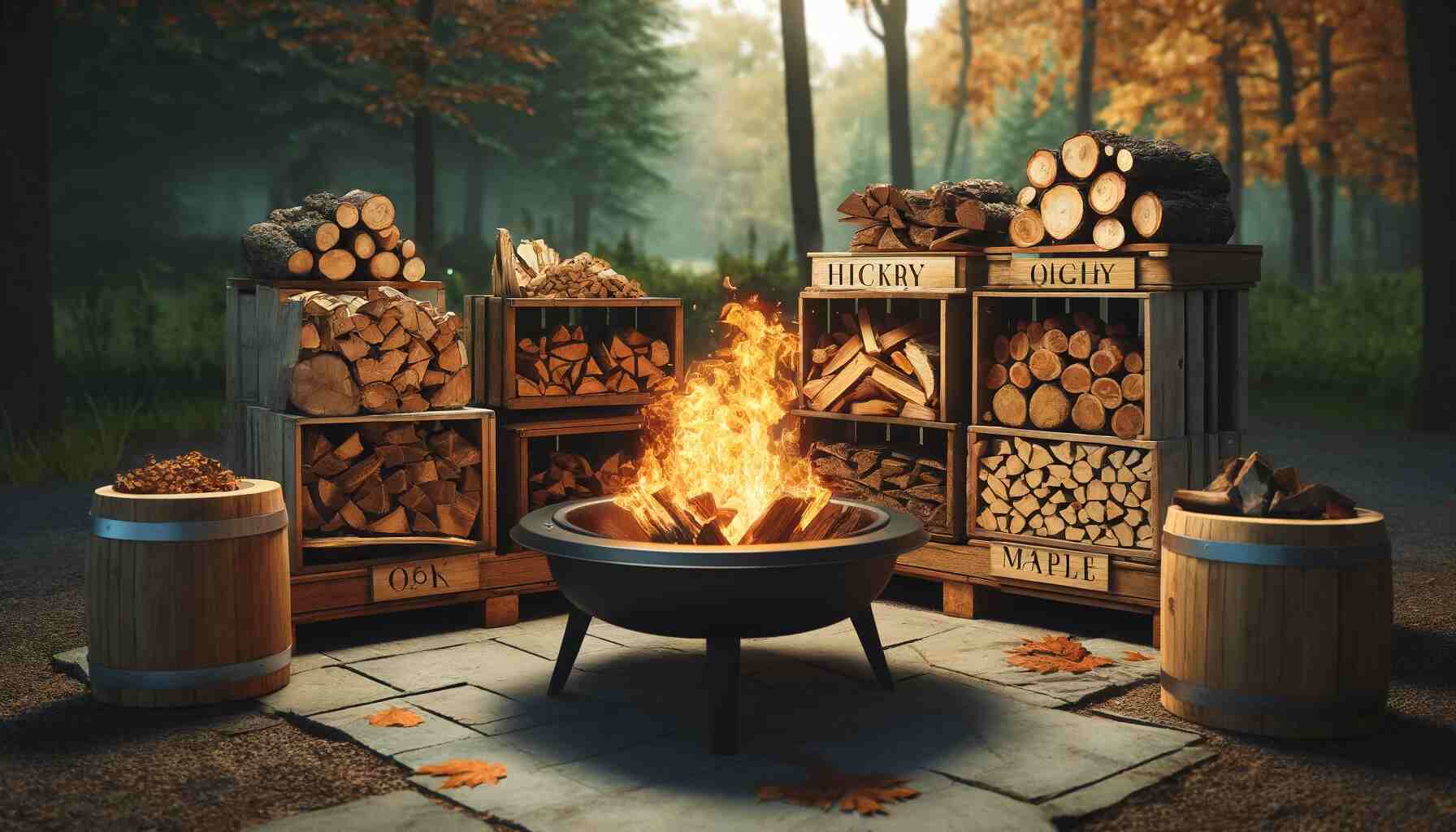This guide will provide an in-depth look at various firewood, rated from best to worst, to help you make informed decisions.
Choosing the best firewood can be the difference between a warm, crackling fire and a frustratingly smoky mess. Whether you’re preparing for winter, planning a camping trip, or just enjoy the ambiance of a fire pit, understanding the qualities of different types of firewood is essential.
Understanding Firewood Qualities
Before diving into specific types of firewood, it’s important to understand the key qualities that make some woods better than others for burning:
- Heat Output (BTUs): Different woods produce different amounts of heat when burned. Hardwoods generally have higher BTU ratings compared to softwoods.
- Burn Time: Hardwoods burn longer than softwoods, providing sustained heat over time.
- Smoke Production: Some woods produce more smoke, which can be problematic, especially indoors.
- Creosote Build-Up: Woods that produce more creosote can lead to dangerous build-ups in chimneys.
- Ease of Splitting: How easy a wood is to split can affect how much effort is required to prepare it for burning.
- Aroma: Some woods produce pleasant aromas, enhancing the experience of a fire.
Best Firewood to Burn
| Rank | Species | BTUs | Weight/Cord (lbs) | Quality/Notes |
|---|---|---|---|---|
| 1 | Oak | 24-28 million | 3,700-4,200 | High heat output, long burn time, low smoke, mild aroma, needs long seasoning time. |
| 2 | Hickory | 27-30 million | 4,200 | Very high heat output, long burn time, strong sweet aroma, hard to split. |
| 3 | Maple | 24-25 million | 3,700-4,100 | High heat output, long burn time, low smoke, mild sweet aroma, easy to split. |
| 4 | Birch | 20-21 million | 3,150 | High heat output, moderate burn time, moderate smoke, sweet aroma, easy to split. |
Good Firewood to Burn
| Rank | Species | BTUs | Weight/Cord (lbs) | Quality/Notes |
|---|---|---|---|---|
| 5 | Ash | 23-24 million | 3,600 | High heat output, moderate burn time, low smoke, burns well when green, easy to split. |
| 6 | Cherry | 20-21 million | 3,000 | Moderate heat output, moderate burn time, low smoke, pleasant sweet aroma, easy to split. |
| 7 | Beech | 24 million | 3,800 | High heat output, long burn time, low smoke, hard to split when wet, mild aroma. |
Fair Firewood to Burn
| Rank | Species | BTUs | Weight/Cord (lbs) | Quality/Notes |
|---|---|---|---|---|
| 8 | Elm | 20 million | 3,200-4,000 | Moderate heat output, long burn time, moderate smoke, hard to split, produces more creosote. |
| 9 | Sycamore | 19 million | 2,700 | Moderate heat output, short burn time, moderate smoke, easy to split, good for starting fires. |
| 10 | Pine | 17-18 million | 2,800-3,200 | Low to moderate heat output, short burn time, high smoke and creosote production, easy to split, fresh pine scent. |
Poor Firewood to Burn
| Rank | Species | BTUs | Weight/Cord (lbs) | Quality/Notes |
|---|---|---|---|---|
| 11 | Poplar | 14-17 million | 2,500 | Low heat output, short burn time, moderate smoke, easy to split, best for kindling. |
| 12 | Willow | 17 million | 2,400 | Low heat output, short burn time, high smoke and creosote production, moderate splitting, emergency use. |
Helpful Statistics
- BTUs (British Thermal Units): This is a measure of heat output. Hardwoods like hickory, oak, and maple produce around 24-30 million BTUs per cord, making them excellent for heating.
- Weight per Cord: A cord is a stack of wood measuring 4 feet high by 4 feet wide by 8 feet long. Heavier woods generally produce more heat. For example, a cord of hickory weighs about 4,200 lbs, whereas a cord of pine weighs around 2,800-3,200 lbs.
- Moisture Content: Properly seasoned firewood should have a moisture content below 20%. Freshly cut wood, or green wood, can have a moisture content of 50% or higher.
Buying Guide
When purchasing firewood, consider the following tips:
- Seasoning: Ensure the wood has been seasoned for at least six months to a year. Seasoned wood has lower moisture content and burns more efficiently.
- Type of Wood: Choose hardwoods like oak, hickory, and maple for the best heat output and burn time.
- Quantity: Firewood is typically sold by the cord or fraction of a cord. Know how much wood you need based on your heating requirements.
- Source: Buy from reputable dealers to ensure the wood is properly seasoned and free from pests or diseases.
Recommended Amazon Products
- Firewood Rack: Amagabeli 4ft Firewood Rack – A sturdy rack to store your firewood off the ground, ensuring proper airflow and seasoning.
- Moisture Meter: General Tools MMD4E Digital Moisture Meter – Essential for checking the moisture content of your firewood.
- Splitting Axe: Fiskars 378841-1002 X27 Super Splitting Axe – A high-quality axe that makes splitting wood easier.
- Firewood Carrier: INNO STAGE Log Carrier – Convenient for transporting firewood from your storage area to the fireplace.
- Chimney Cleaning Kit: Gardus RCH205-B SootEater Rotary Chimney Cleaning System – Keeps your chimney clean and reduces creosote build-up.
Tips for Using Firewood
- Seasoning: Properly seasoned firewood burns more efficiently and produces less smoke. Season firewood for at least six months to a year.
- Storage: Store firewood off the ground and cover the top to protect it from rain and snow while allowing airflow to dry the wood.
- Mixing Woods: Mix hardwoods and softwoods to get the benefits of both. Use softwoods for kindling and hardwoods for sustained heat.
- Safety: Regularly clean chimneys to prevent creosote build-up, which can cause chimney fires.
Conclusion
Choosing the right firewood involves considering various factors such as heat output, burn time, smoke production, and ease of splitting. Hardwoods like oak, hickory, and maple are among the best choices for their high heat output and long burn times. Softer woods like pine and poplar have their uses but are generally less efficient and produce more smoke.
By understanding the qualities of different firewoods and following proper storage and seasoning practices, you can enjoy warm, efficient fires whether you’re heating your home or enjoying an evening by the fire pit.
Additional Resources
This comprehensive guide aims to help you make the best choice for your firewood needs, ensuring efficient, safe, and enjoyable fires all season long.





